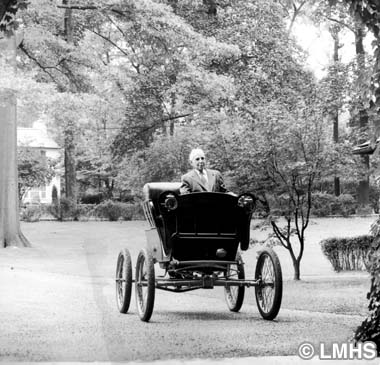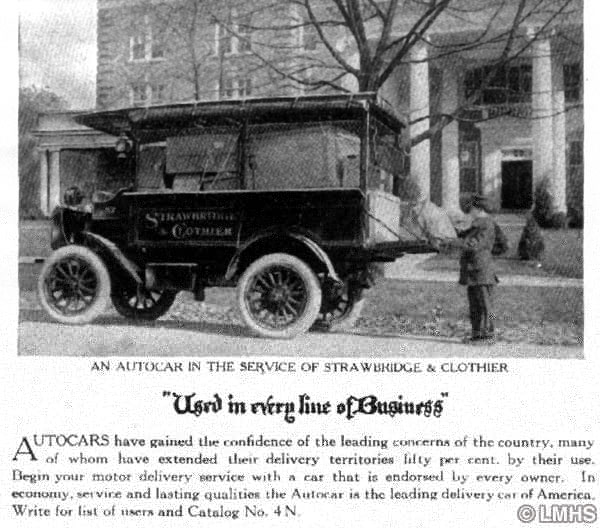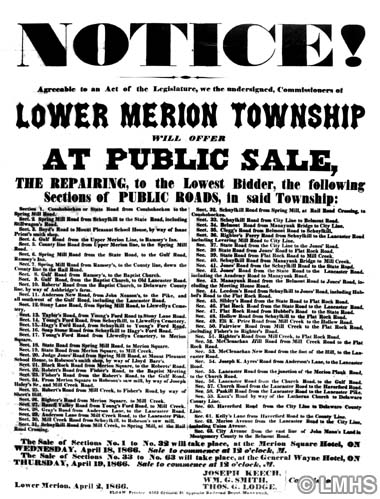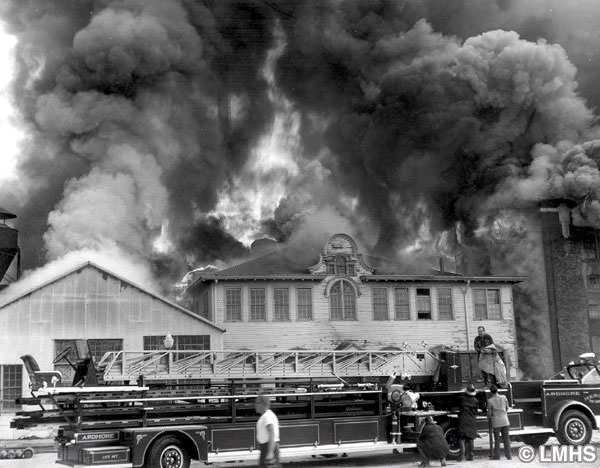The Automobile Revolution
The early part of the twentieth century produced a prodigious number of automotive ventures. Many of these early pioneers did not make it past the prototype stage before disappearing forever. Of the three automobile makers within the Lower Merion borders, one continues today, one achieved great fame in the 1920s before closing virtually forgetten in 1971, and the other disappeared after just a brief four year period.
Autocar
The first manufacturer of motorized conveyances in the area was Autocar, founded in April 1900. The first year of production, 1901, saw 27 one cylinder vehicles roll from their shops. In 1902, they introduced a two cylinder model, believed to be the first produced in the United States. They also pioneered the modern spark plug, shaft drive (replacing chain drive) and engine timing controls for the steering wheel. In 1907, they introduced their first truck, and found their niche among manufacturers. So popular were their heavy trucks, that in 1912, they ceased manufacture of passenger cars entirely.


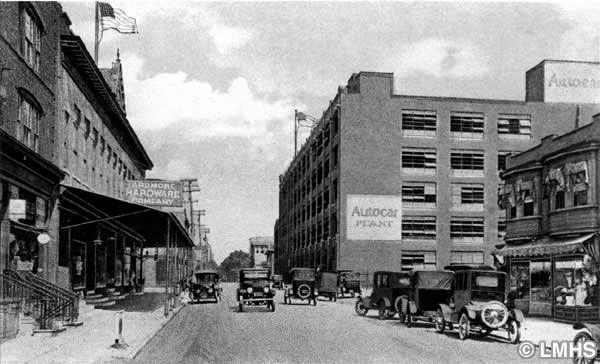
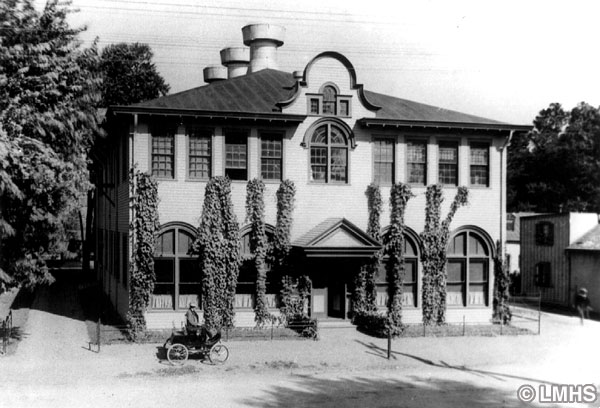
During World War I, they supplied personnel carriers, ambulances and heavy trucks for the war effort. In 1920, they introduced a 4-cylinder model producing 29.6 horsepower and capable of operating their heaviest capacity truck, which sported a payload of 6,700 pounds. In 1921, they introduced an even larger 12,000 pound payload truck painted in your choice of color, so long as it was “Autocar red.”
Between 1923 and 1927, they offered an electric vehicle in addition to their gasoline powered units, but top speed was limited to 12 mph and only found buyers in major cities.
1928 brought a 6-cylinder engine with 46 horsepower for their ever larger vehicles. 1930 brought the famous “Blue Streak” engine, which was to be used for the next 20 years in various sizes. During the depression, they introduced tractor-trailers which could haul up to 73,000 pounds.
For World War II, they built over 10,000 military vehicles, armored halftracks and trucks for the war effort. One market niche they achieved was the development of a tractor to transport airplanes and tanks.
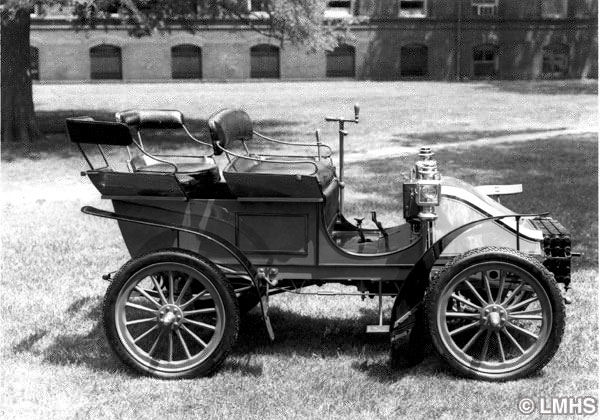
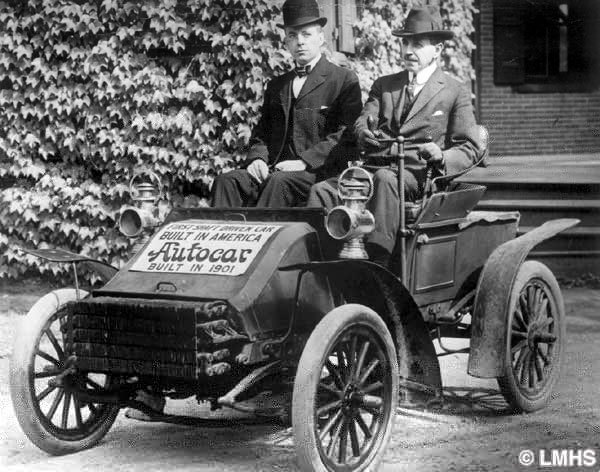
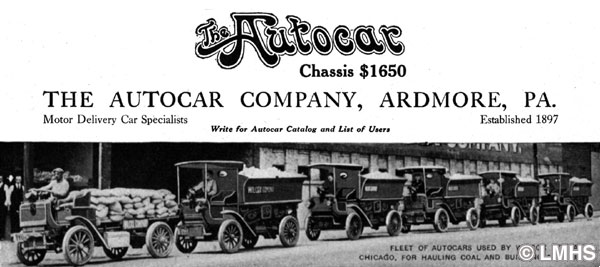
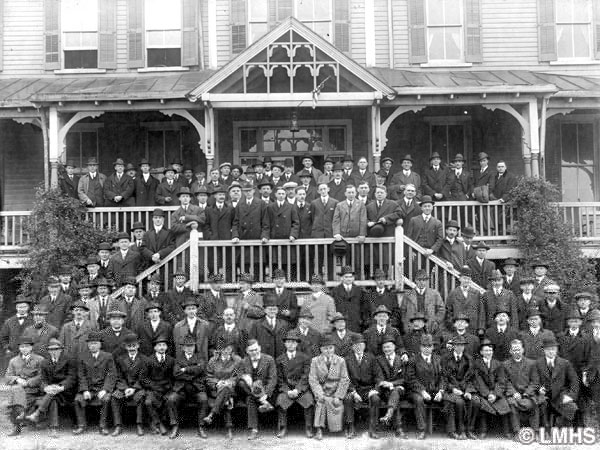
Postwar interstate road construction proved to be a boon to Autocar, with ever increasing sales. With the new 1952 V8 engine, Autocar trucks became the choice for construction, mining, refuse and specialized heavy hauling industries.
In 1953, White Motor Company purchased Autocar, and in 1954, the Autocar plant was moved to a new, much larger facility in Exton. On July 31, 1956 the now vacant factory was being torn down by Cleveland Wrecking when a workman’s torch caused an oil line to explode, igniting the oil soaked floors and turning the entire factory into an inferno which burned fiercely for 12 hours. Bringing the fire under control required the service of 44 firetrucks, 300 firefighters and over 6 million gallons of water. An interesting side note is that many firetrucks used to fight this fire were built upon Autocar chassis.
White/Autocar was purchased by Volvo in 1981. Autocar expanded under the new owners to produce construction and heavy trucks with modern styling to attract owner-operators, a successful venture. Today, production of Autocar trucks continues in Volvo’s Dublin, Virginia plant. The next time you see a big construction dump truck, look for the Autocar “bow tie” on the front fender and remember its origin in Ardmore.
